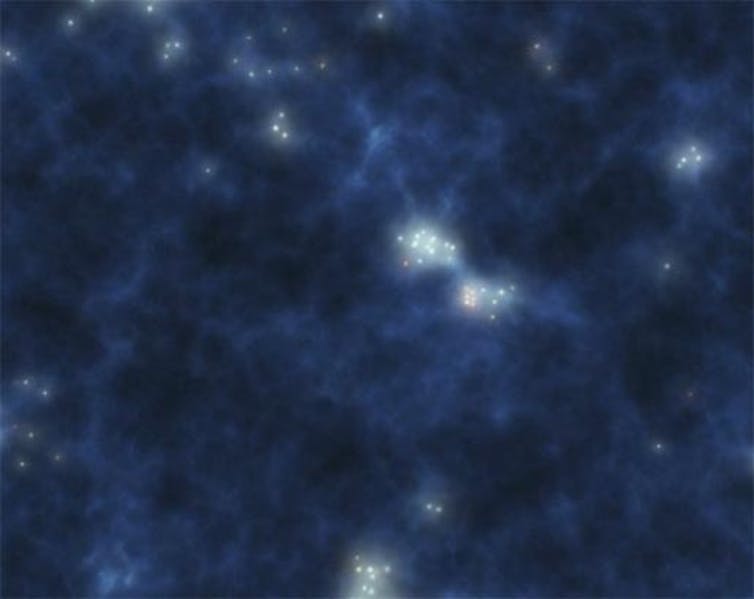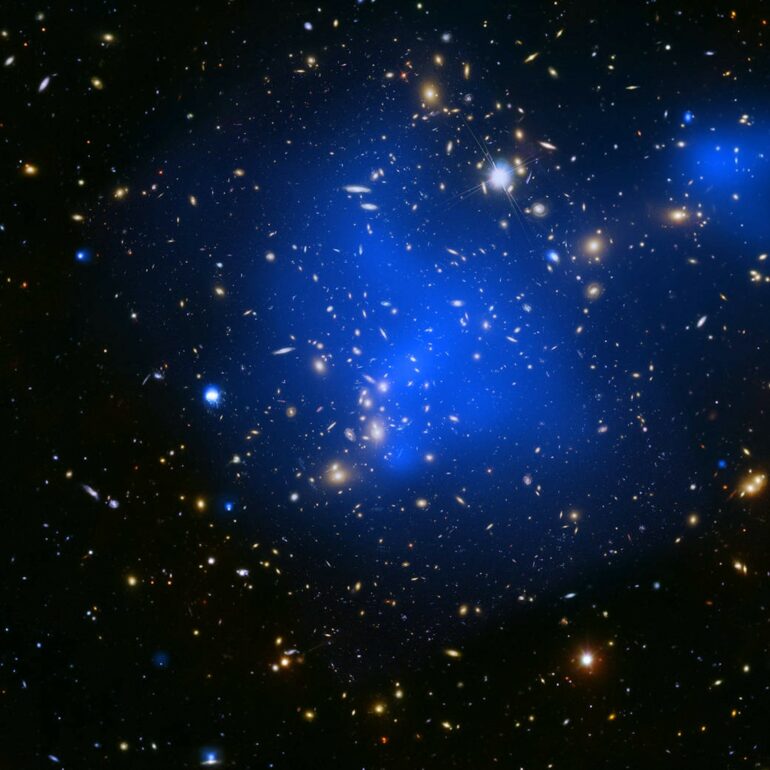The universe we live in is a transparent one, where light from stars and galaxies shines bright against a clear, dark backdrop. But this wasn’t always the case – in its early years, the universe was filled with a fog of hydrogen atoms that obscured light from the earliest stars and galaxies.

The early universe was filled with a fog made up of hydrogen atoms until the first stars and galaxies burned it away.
NASA/JPL-Caltech, CC BY
The intense ultraviolet light from the first generations of stars and galaxies is thought to have burned through the hydrogen fog, transforming the universe into what we see today. While previous generations of telescopes lacked the ability to study those early cosmic objects, astronomers are now using the James Webb Space Telescope’s superior technology to study the stars and galaxies that formed in the immediate aftermath of the Big Bang.
I’m an astronomer who studies the farthest galaxies in the universe using the world’s foremost ground- and space-based telescopes. Using new observations from the Webb telescope and a phenomenon called gravitational lensing, my team confirmed the existence of the faintest galaxy currently known in the early universe. The galaxy, called JD1, is seen as it was when the universe was only 480 million years old, or 4% of its present age.
A brief history of the early universe
The first billion years of the universe’s life were a crucial period in its evolution. In the first moments after the Big Bang, matter and light were bound to each other in a hot, dense “soup” of fundamental particles.
However, a fraction of a second after the Big Bang, the universe expanded extremely rapidly. This expansion eventually allowed the universe to cool enough for light and matter to separate out of their “soup” and – some 380,000 years later – form hydrogen atoms. The hydrogen atoms appeared as an intergalactic fog, and with no light from stars and galaxies, the universe was dark. This period is known as the cosmic dark ages.
The arrival of the first generations of stars and galaxies several hundred million years after the Big Bang bathed the universe in extremely hot UV light, which burned – or ionized – the hydrogen fog. This process yielded the transparent, complex and beautiful universe we see today.
Astronomers like me call the first billion years of the universe – when this hydrogen fog was burning away – the epoch of reionization. To fully understand this time period, we study when the first stars and galaxies formed, what their main properties were and whether they were able to produce enough UV light to burn through all the hydrogen.



